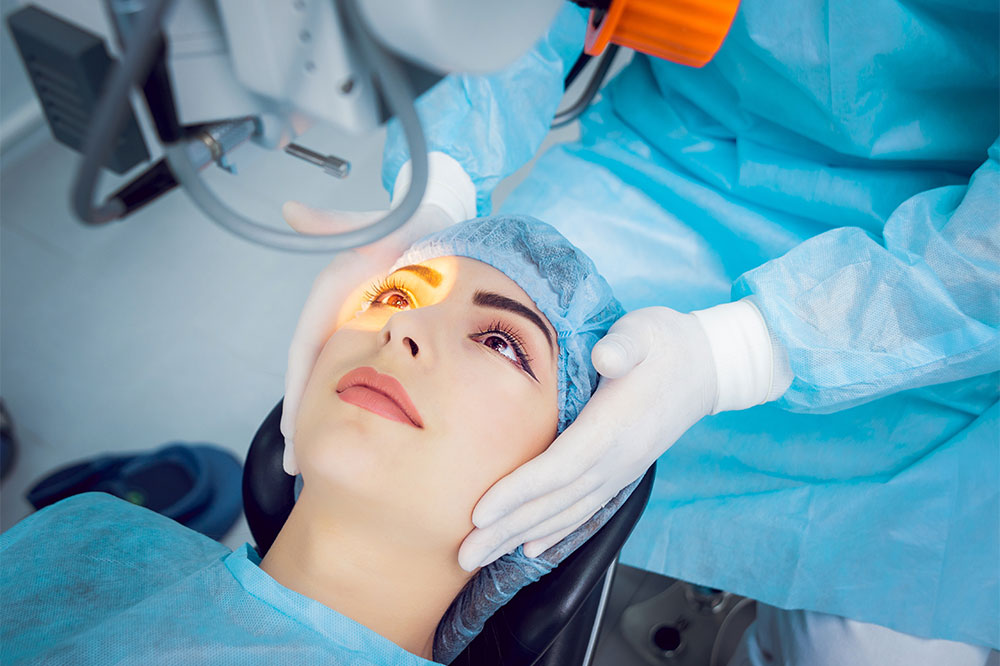
Cataract surgery – Types, cost, and precautions
A cataract is referred to as a clouding of the clear lens of the eye. Cataracts can cause cloudy vision, making it difficult to read, drive, and understand facial expressions. Most cataracts develop slowly, but they can eventually impair vision. Wearing special glasses can help treat this eye condition early on. However, cataract surgery can improve vision if it is severely impaired. Here are the causes, types, and costs of cataract surgery.
Causes of cataract
he lens of the eye is mainly made up of water and proteins. Over time, proteins start to build up in the eye as one ages. These residual proteins may cause the eye lens to become foggy, affecting one’s vision. Cataracts typically develop in both eyes, though not always at the same rate. This condition can also develop more prominently in one eye than the other, resulting in a disparity in vision between the two. This eye condition can also develop due to other health conditions such as diabetes, eye damage, and prolonged sun exposure without eye protection. When cataract symptoms are moderate, doctors frequently advise contacts or glasses. However, as cataracts grow over time, surgery becomes necessary. Most people delay the procedure until the condition significantly impairs their vision, causing problems like difficulty reading or driving.
Types of cataract surgery
Cataract surgery is classified into three types. All procedures involve removing the existing opaque lens and implanting a synthetic one. Phacoemulsification is the most widely used procedure. The patient can see things more clearly within 24-48 hours of a successful surgery. It also improves the visibility of vibrant colors that were previously dull and dark. The three types of cataract surgery are:
- Phacoemulsification
A cataract is divided into small fragments using high-frequency ultrasound during this procedure. This ultrasound is delivered through a handpiece that gently separates and dissolves the lens. Once the lens has been broken, the surgeon uses gentle suction to remove the broken bits from the eye. The doctor will then insert a specially designed implant known as an intraocular lens (IOL) in place of the natural lens. The surgeon then uses a small amount of saline to expand the surrounding cornea and seal the opening made at the start of the treatment. The operation takes about 10 to 15 minutes to complete. Eye drops and a shield are provided to aid in the healing process. - Cataract surgery using femtosecond laser assistance (FLACS)
In this procedure, a laser is used to replace manual stages such as initial incisions, opening the lens capsule, and dissecting the lens. The laser option will be more expensive. FLACS is thought to be a better option for advanced and mature cataracts. However, there is no guarantee that laser-assisted surgery will be safer or faster to recover from. The success of any cataract surgery is heavily dependent on the eye surgeon’s knowledge and expertise. - Surgery for Extracapsular Cataracts
This procedure is used when ultrasound cannot dissolve cataracts. The surgeon makes a tiny incision just inside the cornea’s outer margins. The surgeon removes the lens by carefully opening the front of the capsule. Since the cataract is more severe in this case, it can be easily removed in one piece, but sometimes a suction technique is employed to remove all tiny particles from the eye. This treatment is usually required if a person’s cataracts are caused by trauma.
Cost of cataract surgery
The cost of cataract surgery may vary depending on a variety of factors. Some criteria include the type of surgery, the type of lens, the surgeon’s experience, and any post-operative complications. Cataract surgery costs between $3,783 and $6,898 per eye in the country for those without Medicare or private health insurance. Cataract surgery with insurance typically costs around $2,526 per eye. However, prices may vary depending on various factors, including the type and location of the procedure.
Precautions after surgery
Avoid driving and, if possible, refrain from using heavy machinery for three to four days after surgery. After the procedure, a clear shield is placed over the eyes to shield them from rubbing, dust, and external irritants. Keep the shield on and rest to allow your eyes to adjust to the new changes before removing it. Avoid bright, flashing lights for at least 24 hours after the surgery. This includes light from a television, phone, tablet, or laptop.
Prevention of cataract
Although cataracts cannot be slowed down, several healthy lifestyle changes can help prevent the condition. Regular eye exams can aid in the early detection of eye conditions such as cataracts and other issues. Manage any additional health issues, such as diabetes or other illnesses that can increase the risk of cataracts. Follow a nutritious food plan with lots of fruits and vegetables. Include colorful fruits and vegetables in the meal plan for necessary vitamins and nutrients. Fruits and vegetables contain many antioxidants, which help keep your eyes healthy. Wear sunglasses to shield your eyes from UV rays and to help prevent cataracts.




